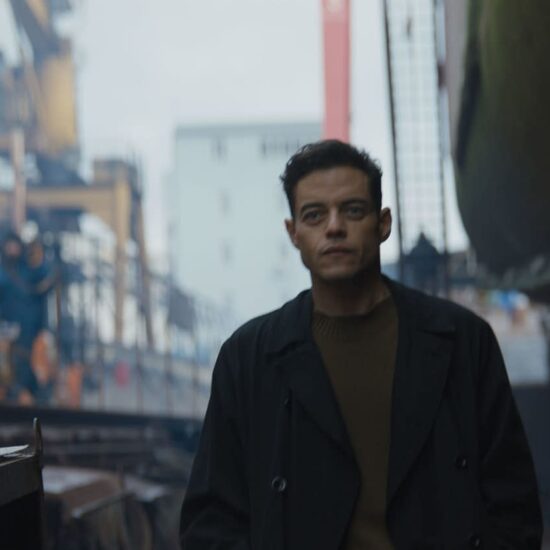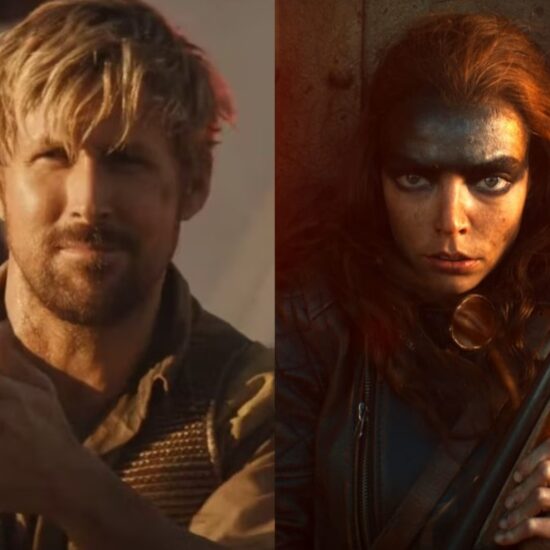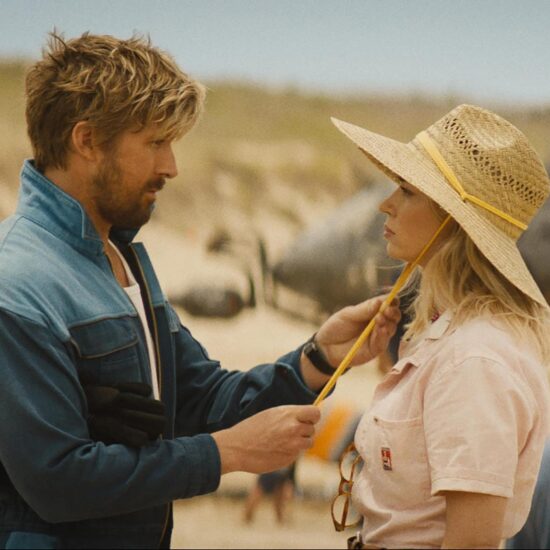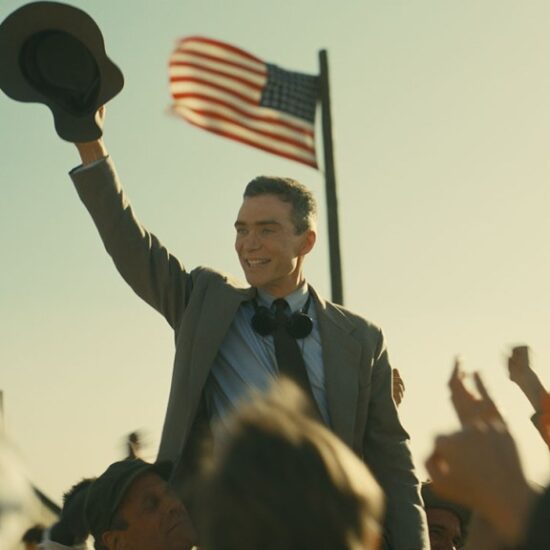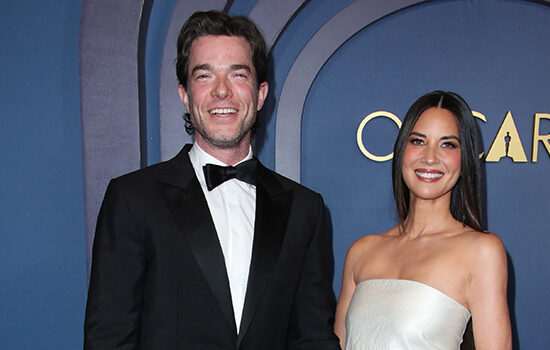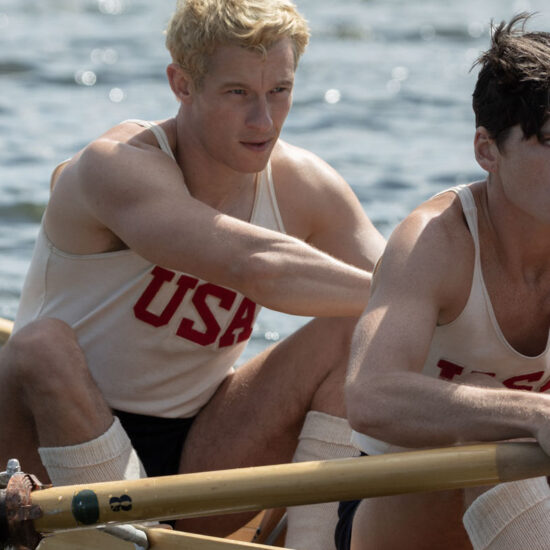
The first few minutes of White Plastic Sky, the animated feature from Hungarian directors Tibor Bánóczki and Sarolta Szabó screening in Berlinale’s Encounters program, sketches a future world with echos of past cinematic dystopias.
The world has been stripped of life, the soil poisoned, all animals driven to extinction. Humanity survives under a huge geodesic dome (the plastic sky of the title) and has learned to feed on itself. At the age of 50, every citizen gets a special implant that turns them into the food source for the next generation. In a scene resembling the pod farms of the Matrix films, we see how implanted humans are transmogrified into a hybrid plant species, becoming trees that provide oxygen and food for those under the dome.
“There are similarities in our story to Soylent Green or Logan’s Run, similar motifs to other high-concept, or hardcore science fiction,” admits Bánóczki, “but within this genre we tried to find another way of telling the story, another vision of this [post-apocalyptic] world.”
Their story starts out in familiar territory. Stefan [Tamás Keresztes] accepts his life in near-future Budapest, living under the dome. But when his wife Nóra [Zsófia Szamosi] choses to accept voluntary implantation years before her time, he decides to take on the system and save her life. Cue some high-tech heist and chase scenes as Stefan and Nóra make their way to the heart of their dystopian society, and the Professor [Géza Hegedűs D] who designed the human-to-plant technology that keeps humanity going.
But this is no Hollywood sci-fi film. In place of Charlton Heston’s conspiratorial histrionics — “Soylent Green is people!!!” — or messianic salvation a la Keanu Reeves, White Plastic Sky gives us a tragic love story. It seems the Professor’s transformative technology has a fatal flaw: when the human-to-tree hybrids start to flower, their blooms are toxic to humans. Nóra and Stefan face the choice: burn up this new life form they have helped bring into existence or transform into trees themselves, and in the process help kill off the rest of humanity.
“We didn’t want to tell a story about characters saving humanity, to have the story you have so often in these post-apocalyptic or dystopian movies where the story is about a group, or one person, who survives, where, in the end, humanity wins,” notes Szabó. “We wanted to be a little bit more complex, and a bit more cruel.”
While developing their screenplay, Bánóczki and Szabó spoke to geologists, botanists and meteorologists about the coming climate catastrophe. They talked about worst-case scenarios, the damage done, about whether the end of humanity would really be such a bad thing for the planet.
“The most important question is about sacrifice, and self-sacrifice, which goes to the core of what humanity, what all individuals, have to do in order to change something about the climate crisis,” says Szabó. “Focusing it on a love story was a way to reach the audience, to target the heart instead of the brain.”
White Plastic Sky, which marks Bánóczki and Szabó’s feature debut, has been a labor of love. In addition to writing and directing the film, the pair acted as cinematographers and production designers on the movie. “We worked non-stop for seven years, really non-stop, no weekends, no holidays, to get this done, it was the only way to do it with the budget we had,” says Szabó.
The film’s final budget, €2.5 million ($2.6 million), was tiny even by European standards. “We were in France last year to present the project and a producer there told me making an animated film for under €4 million was impossible,” notes Bánóczki. “There are still no models for these kinds of movies. You are seeing some adult feature animation in Europe doing well at festivals and having success, but there’s no production model for how to make them.”
Recent grown-up animation — think Jonas Poher Rasmussen’s Oscar-nominated animated documentary Flee, with its 2D graphic novel look, Phil Tippett’s stop-motion experimental horror Mad God or Dash Shaw’s Cryptozoo, which uses fine pencil drawings filled in with watercolor — share no unified aesthetic.
“For every film, you have to create a whole method for making it from scratch,” says Bánóczki.
To capture the actors’ performances, White Plastic Sky used classic rotoscoping — recording the actors and then tracing their movements by hand “on a digital tablet but hand drawing, no motion capture or any of that,” says Bánóczki — and then composted them into a 3D digital-designed background. The effect is at once retro and modern, as if someone had uploaded a 70s animated film onto a PS4.
“It’s hard to say if this could be a model for future projects, because the approach was so unique and, well, so Eastern European,” Bánóczki adds. “When we showed producers from Western Europe the first images, what we wanted to achieve and then showed them the budget, they said we were crazy.”
But by keeping White Plastic Sky in the East —the film was set up as a co-production between Hungary’s Salto Films and Slovakia’s Artichoke, with some final financing from Euroimages — Szabó’ and Bánóczki were able to make the movie they wanted, without interference.
“It’s been a long journey but, sadly, the topic of our film [environmental catastrophe] didn’t age,” says Bánóczki. “Now its up to the audience to decide how they respond.”
White Plastic Sky premieres on Friday, Feb. 17 in the Berlinale’s Encounters sidebar. Films Boutique is selling the film worldwide.








